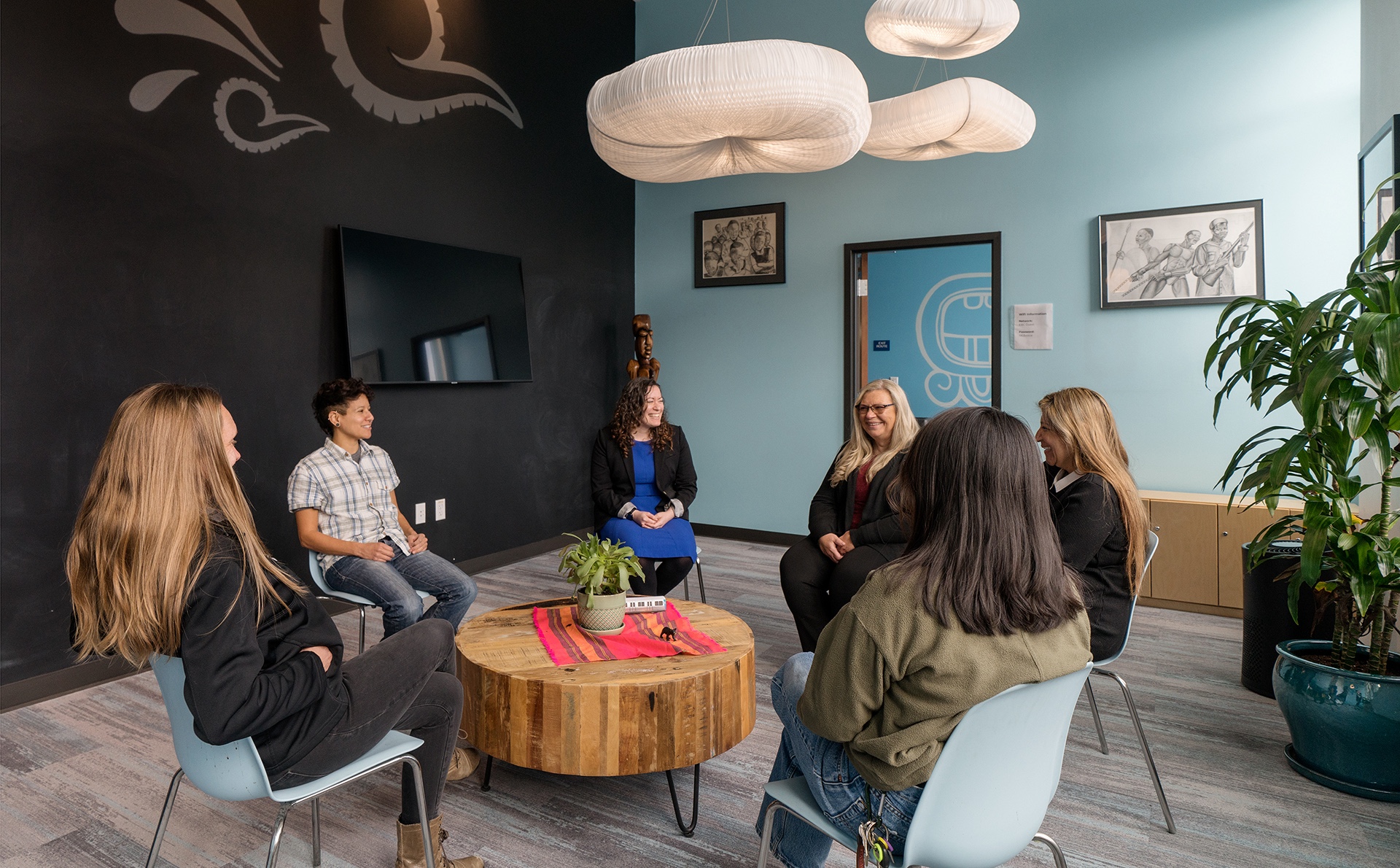
Committed to continual learning and growth
Post-Occupancy Evaluations (POEs) are an essential tool to improve the design of future buildings and increase the wellbeing of people using them. At DJDS, we study our building designs with a focus on the environmental impact on behavior, mental and physical health, and general wellbeing of those who work, live, and transform within them. Over time, we have found core design elements that can address specific trauma transformation needs in order to support the calming of our nervous systems. This process continually refines our design processes and improves client outcomes.
About
Designing Justice + Designing Spaces (DJDS) had the privilege of partnering with the Ella Baker Center for Human Rights in 2016 to bring their home to reality. Restore Oakland opened in December 2019, and beginning in 2023, DJDS conducted an evaluation of the building to understand the impact of the environments on those using the space. This was a participatory action research process which revealed core tenets of environments for wellbeing, in particular for those who have experienced the punitive justice system.
“I have been in lots of circles, and I love them all, this is by far the best setting.”
– Restorative Justice circle facilitator
Project Details
Restore Oakland Building Project Team and evaluation review: Deanna Van Buren, Executive Director & Design Director; Kyle Rawlins, Co-founder, former Real Estate Director; Shelley Roberts, Studio Director; Tola Thomas, Architect & Design Studio Manager
Evaluation Lead: Garrett Jacobs, Director of Research & Evaluation
Data Analysis: Uzoma Idah, Architectural Designer; Dorinda Keyeremateng, DJDS Intern
Graphics: Athena Do, Architectural Designer
Evaluation Design and Graphics: Allison Wong, Community Engagement Manager
Production Design: Sabrina Siskind, Production Designer
Copyediting: Jean-Paul Zapata, former Communications Director; Pier Richards, Office Support Specialist
Community Researcher: Lindsay Berkowitz
Community Reviewers: Ray Evans, Jo Bauen
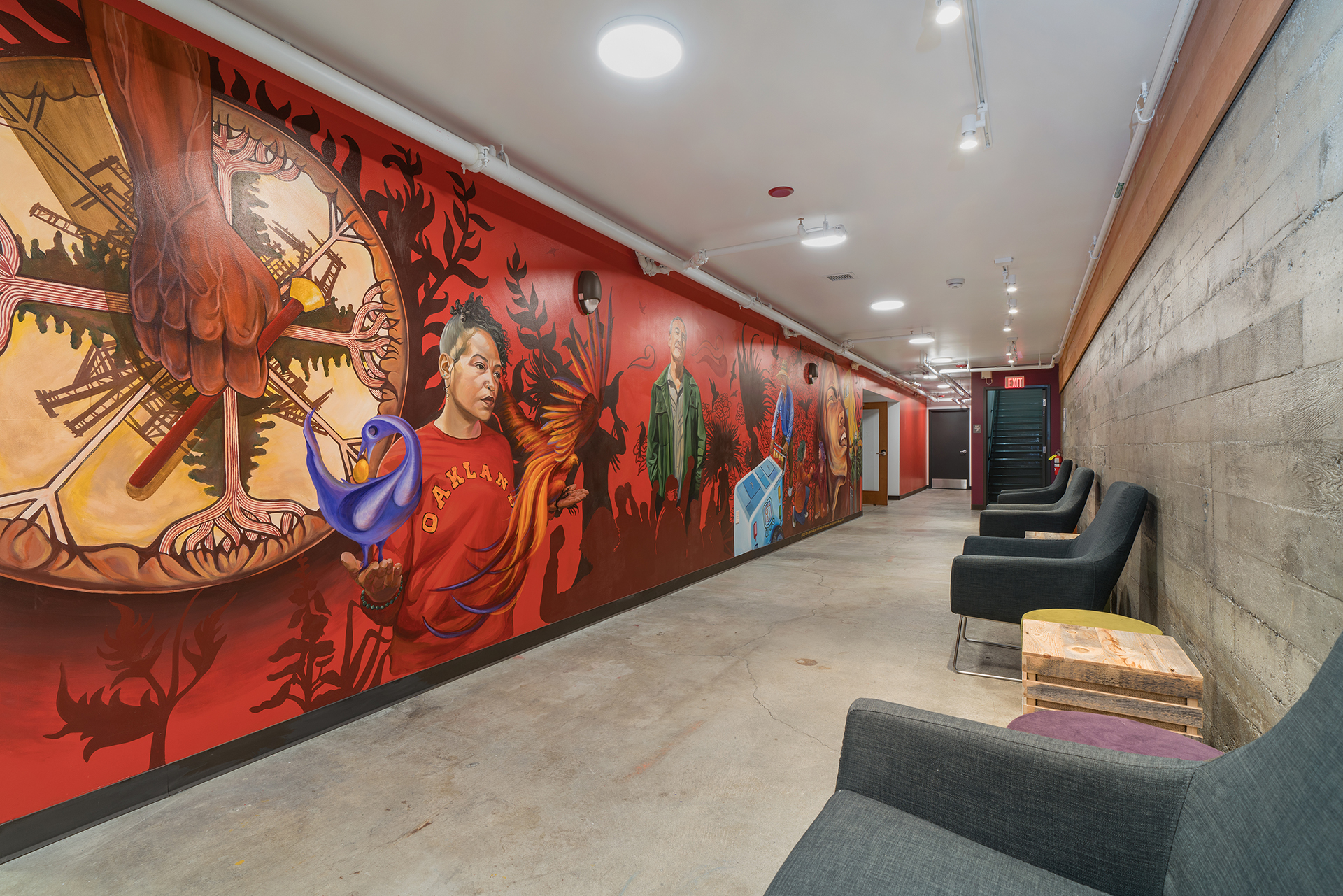

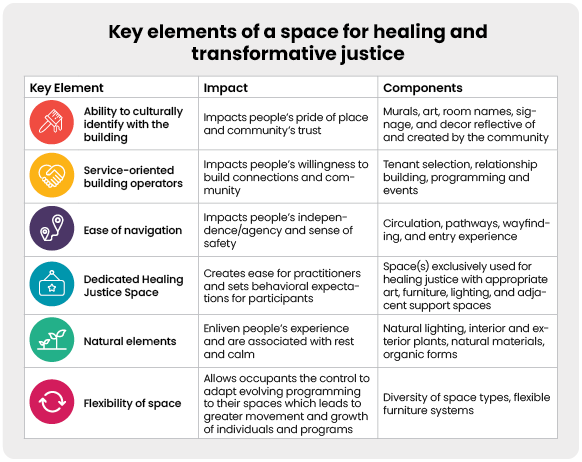
The outcomes from the evaluation focused on the design, operations, and emotional impact that were identified within the six key elements. To read about the outcomes in detail, please request a copy of the full PDF by filling out the form below.
“I like things that remind me of life and living. Particularly as someone who was formerly incarcerated and spending so much time in prison where we didn’t have any plants in my cell or fish or living things, pets.”
– Formerly-incarcerated community member
Punitive Judicial Spaces vs Restorative Justice Spaces – The Spatial Meanings
One of the most meaningful outcomes from the evaluation process is that dedicated spaces for peacemaking and restorative justice help establish the expected behavior for these practices. Much like courtrooms are specifically designed to elicit certain behaviors and feelings, peacemaking spaces can establish behavioral expectations for the “new” practices of healing from harm.
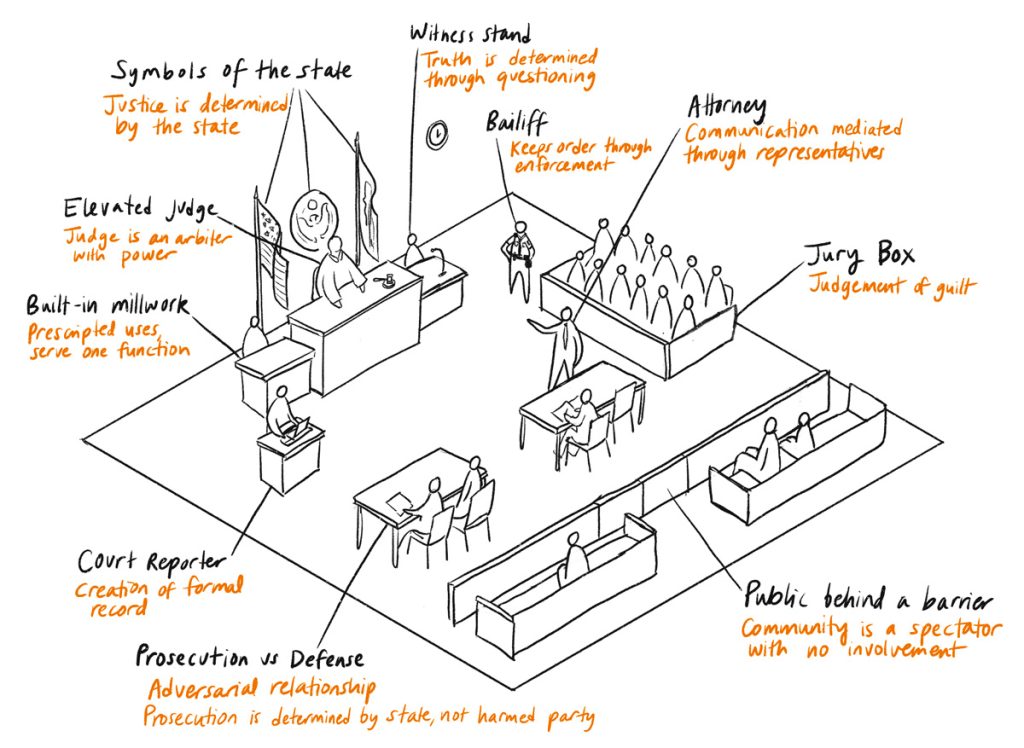
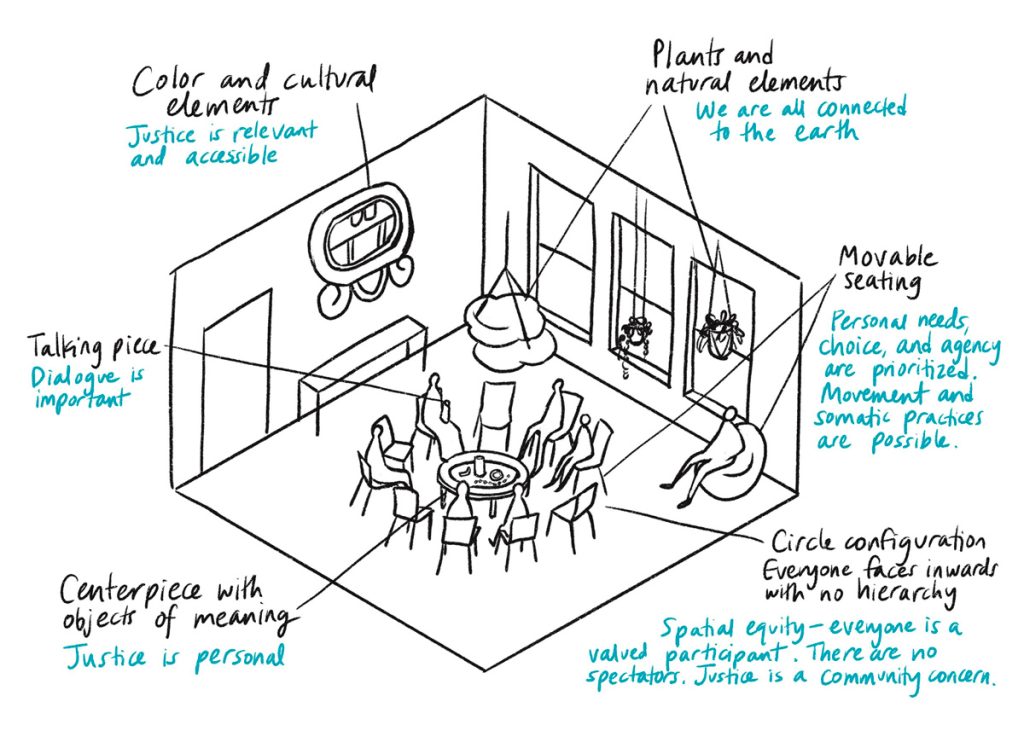
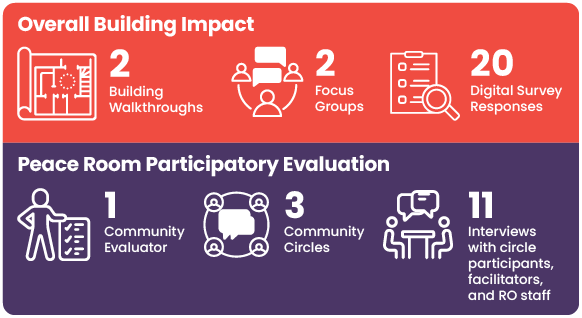
Participatory Research Process
The intention of this analysis is to understand the impact of design and environmental conditions of the spaces on the people who work within and visit the building. As with all DJDS projects, a community-engaged approach allowed us to connect with those most impacted by both the justice system and this building, and in a way that was culturally relevant to the organizations within. There was a further refined lens of analysis related to the impact of design/layout characteristics on those who might have experienced trauma in their lives.
Request a copy of the full report (PDF)
To receive a copy of the “Spaces for Transformational Programming” Restore Oakland Post-Occupancy Evaluation, please fill out the form below. Once submitted, you will receive an email with a link to download the report.
Learn more about our restorative justice projects:
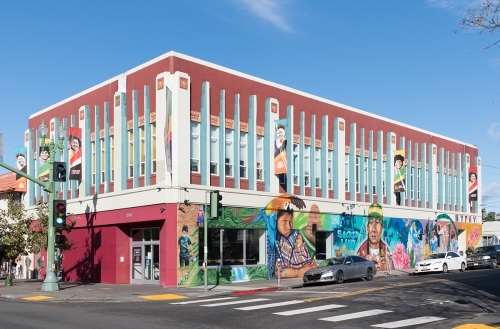
Restore Oakland |
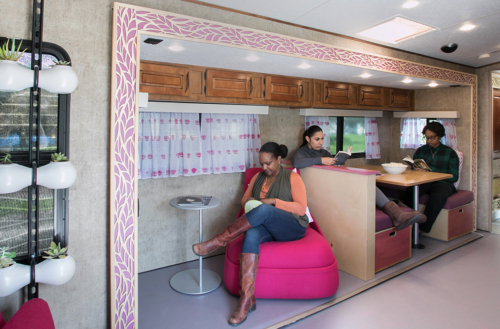
Women's Refuge Trailer |
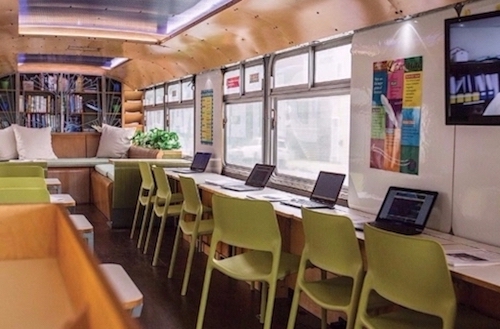
School on Wheels |
